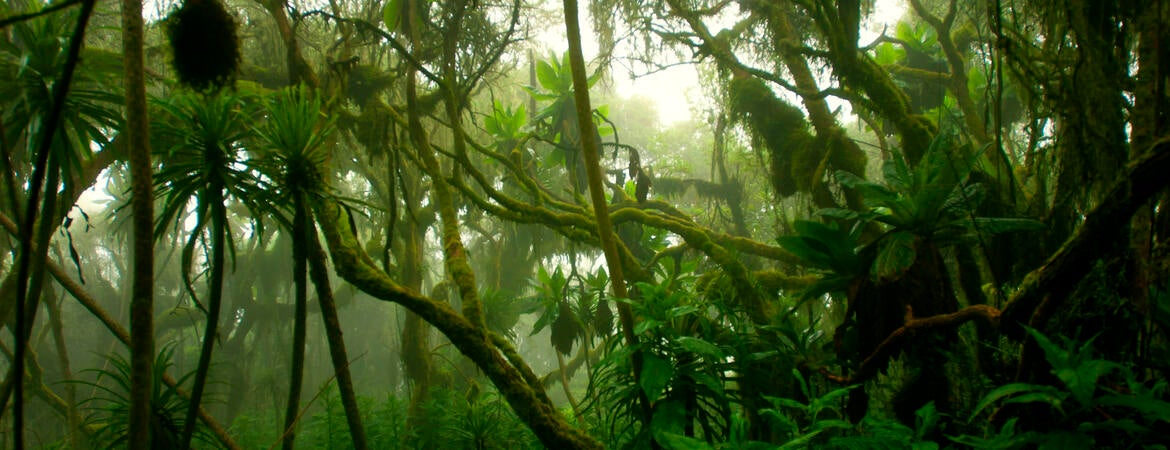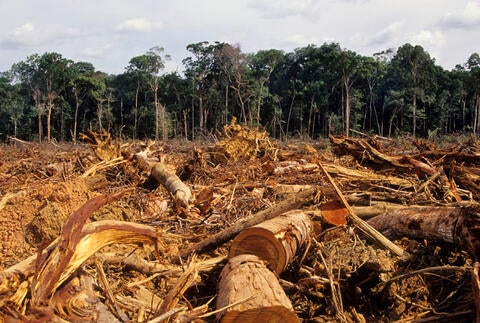
Replanting forests can help cool the planet even more than some scientists once believed, especially in the tropics. But even if every tree lost since the mid-19th century is replanted, the total effect won’t cancel out human-generated warming. Cutting emissions remains essential.
In a new modeling study published in Communications Earth & Environment, researchers at the University of California, Riverside, showed that restoring forests to their preindustrial extent could lower global average temperatures by 0.34 degrees Celsius. That is roughly one-quarter of the warming the Earth has already experienced.
The study is based on an increase in tree area of about 12 million square kilometers, which is 135% of the area of the United States, and similar to estimates of the global tree restoration potential of 1 trillion trees. It is believed the planet has lost nearly half of its trees (about 3 trillion) since the onset of industrialized society.
“Reforestation is not a silver bullet,” said Bob Allen, a climate scientist at UC Riverside and the paper’s lead author. “It’s a powerful strategy, but it has to be paired with serious emissions reductions.”
While previous studies have largely focused on trees’ ability to remove carbon from the atmosphere, this research includes another critical dimension. Trees also have an effect on the chemical makeup of the atmosphere in ways that amplify their cooling effect.
Trees naturally release compounds known as biogenic volatile organic compounds, or BVOCs. These interact with other gases to form particles that reflect sunlight and encourage cloud formation, both of which help cool the atmosphere. Most climate models do not account for these chemical interactions.
“When you include these chemical effects, the net cooling impact becomes more significant,” Allen said. “It’s a crucial part of the picture.”
The benefits of reforestation, however, are not evenly distributed. The study found that tropical forests produce stronger cooling effects with fewer drawbacks. Trees in these regions are more efficient at absorbing carbon and produce greater amounts of BVOCs. They also have less of the surface darkening effect that can cause warming by trees in higher latitudes.
Beyond global temperature, reforestation can also affect regional air quality. The researchers found a 2.5 percent reduction in atmospheric dust in the northern hemisphere under their restoration scenario.
In the tropics, increased BVOC emissions were a mixed bag in terms of air quality. They were linked to worse air based on particulate matter associated with enhanced aerosol formation, but improved air quality based on ozone measurements.
These localized effects, the researchers say, suggest that reforestation efforts do not need to be massive to be meaningful.
“Smaller efforts can still have a real impact on regional climates,” said Antony Thomas, graduate student in UCR’s Department of Earth and Planetary Sciences and co-author of the study. “Restoration doesn’t have to happen everywhere at once to make a difference.”
The researchers acknowledge that the scenario modeled in the study is unlikely to be realized. It assumes trees could be restored to all areas where they once grew, which would require reclaiming developments such as housing as well as farmland and pastures. That raises questions about food security and land-use priorities.
“There are 8 billion people to feed,” Allen said. “We have to make careful decisions about where trees are planted. The best opportunities are in the tropics, but these are also the areas where deforestation continues today.”
The researchers highlight Rwanda as an example of how conservation and economic development can align. There, tourism revenue tied to forest protection is reinvested in local communities, providing incentives to preserve land that might otherwise be cleared.
The study began as a project in Allen’s graduate-level climate modeling course at UC Riverside. It eventually evolved into a collaborative research paper, drawing on Earth system modeling and land-use data to explore what large-scale reforestation could realistically achieve.
Its conclusion is cautiously optimistic: forest restoration is a meaningful part of the climate solution, but not a substitute for cutting fossil fuel use.
“Climate change is real,” Thomas said. “And every step toward restoration, no matter the scale, helps.”
(Cover image of tropical forest: guenterguni/Getty)




